Continuing Saga of the Comet |
Nov 21, 2007 |
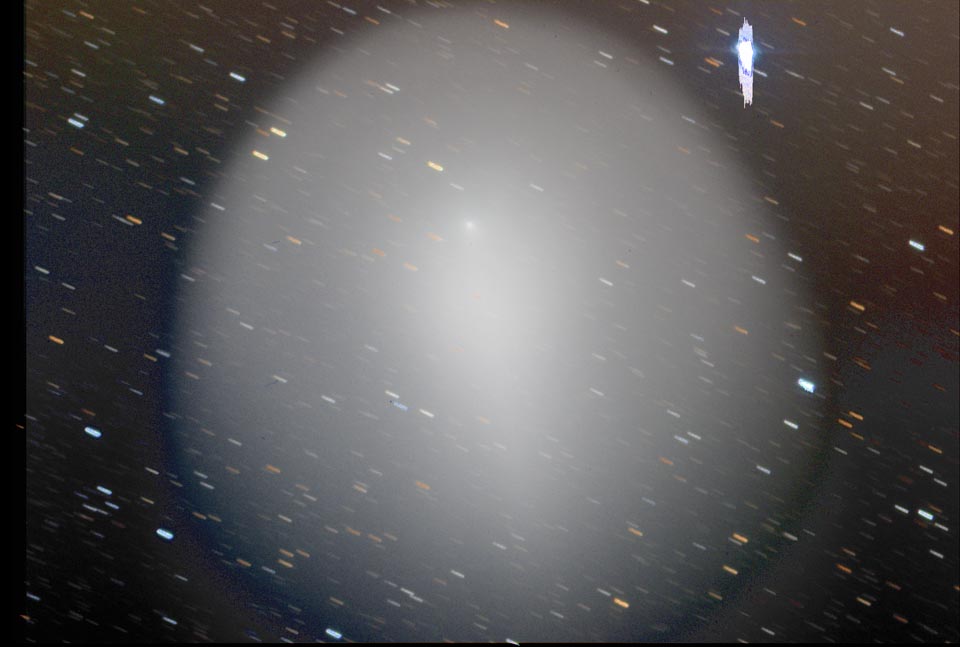 |
Comet 17P/Holmes has grown to fill the entire field height of my CCD images. The nucleus continues to fade, and the jet feature is now prominent. Even in this non-enhanced image, you can see a long streamer extending south (at the 5:30 position) from the nucleus. In the images below, this streamer is enhanced. Although bright moonlight did interfere with taking this image, it did cause somecolor and brightness gradients in the sky background.
|
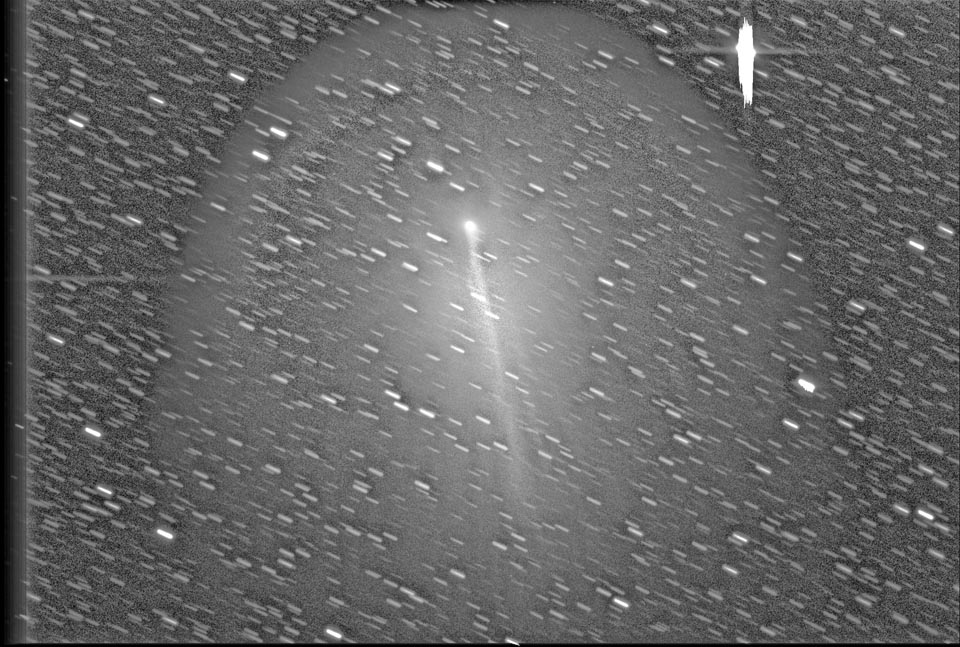 |
Features in the images above and below have been enhanced by a process called rank ordering. This process detects and enhances small brightness variations in an image. One major streamer is obvious, and on careful examination, you can see other streamers as well as kinks in the primary streamer. The image below is a composite of the rank-order images and the color image.
|
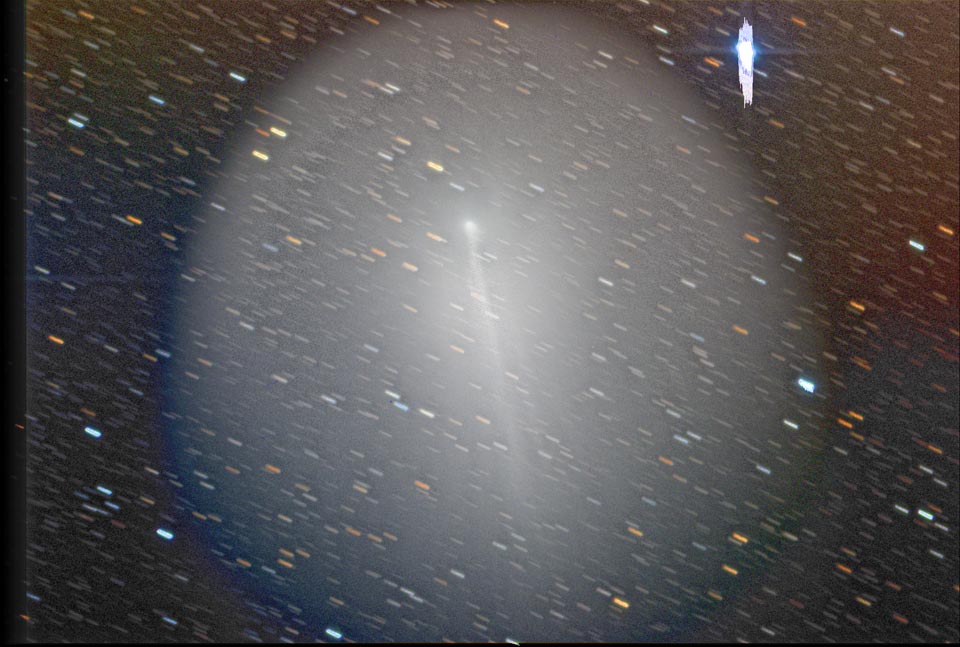 |
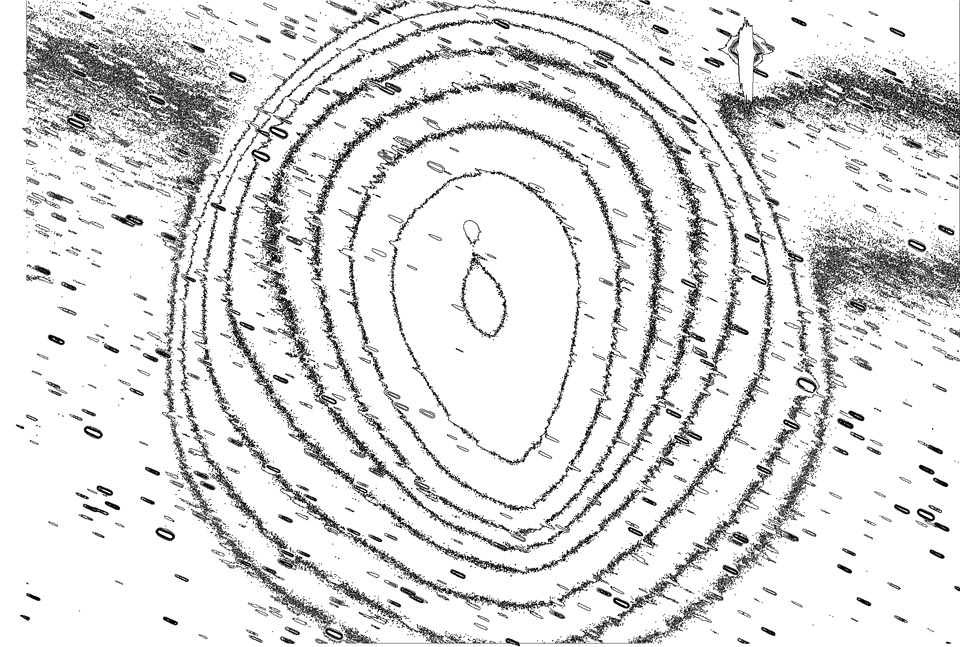 |
The isophotes (lines of constant brightness) continue to evolve. The jet now plays a more important role, giving the second isophote the shape of a leaf. Despite the eccentricity of the inner isophotoes, the outermost isophote is very nearly circular.
|
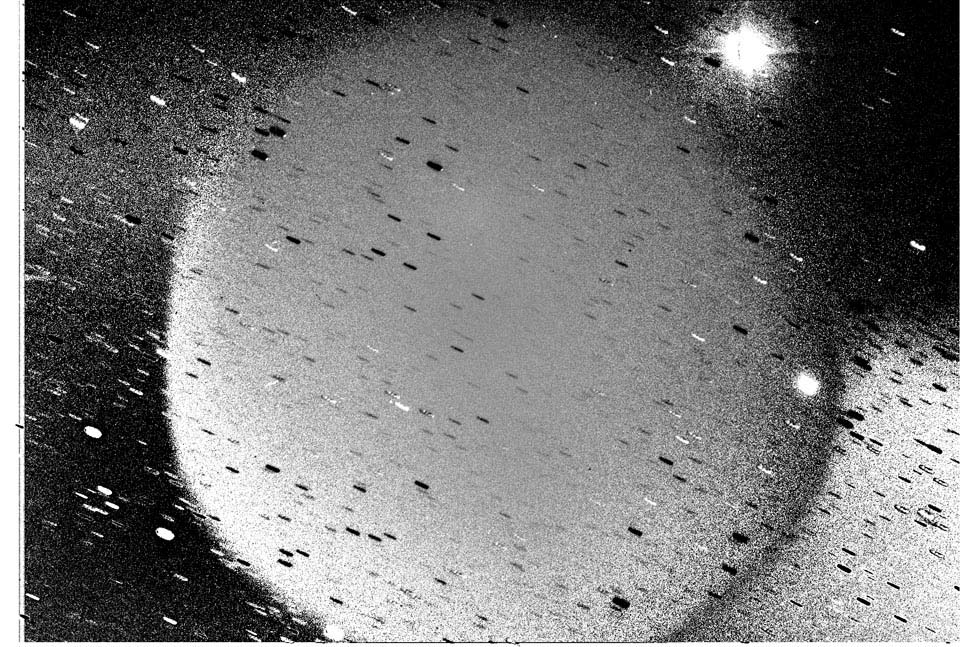 |
Finally, blue-to-red ratio of the comet remains rather bland. I suspect that the color differences seen around the outer edges of the coma are artifacts caused by moonlight.
|
Evolution of a Comet - Oct. 30 through Nov. 13 |
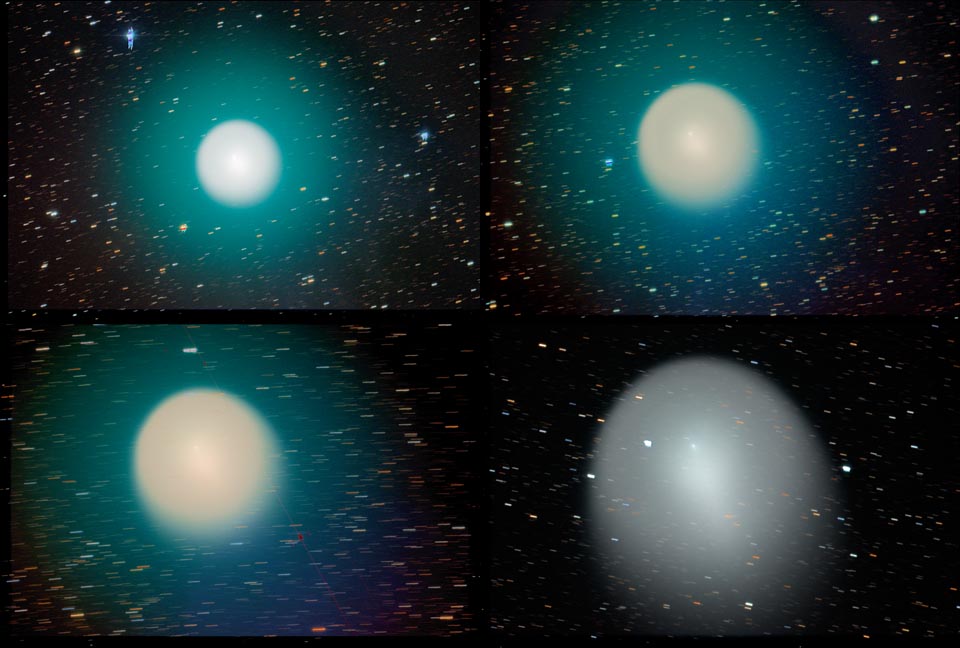 |
This series of images shows how Comet 17P/Holmes has grown larger and dimmer. All four images are at the same scale and have approximately the same color balance, although I have not tried to adjust the color to any rigorous standard (that effort will come later). From left to right, top to bottom, the dates for the images are Oct 30, Nov 2, Nov 4, and Nov 13. In the Nov 13 image, note the absence of the blue outer coma. |
Nov 13, 2007 |
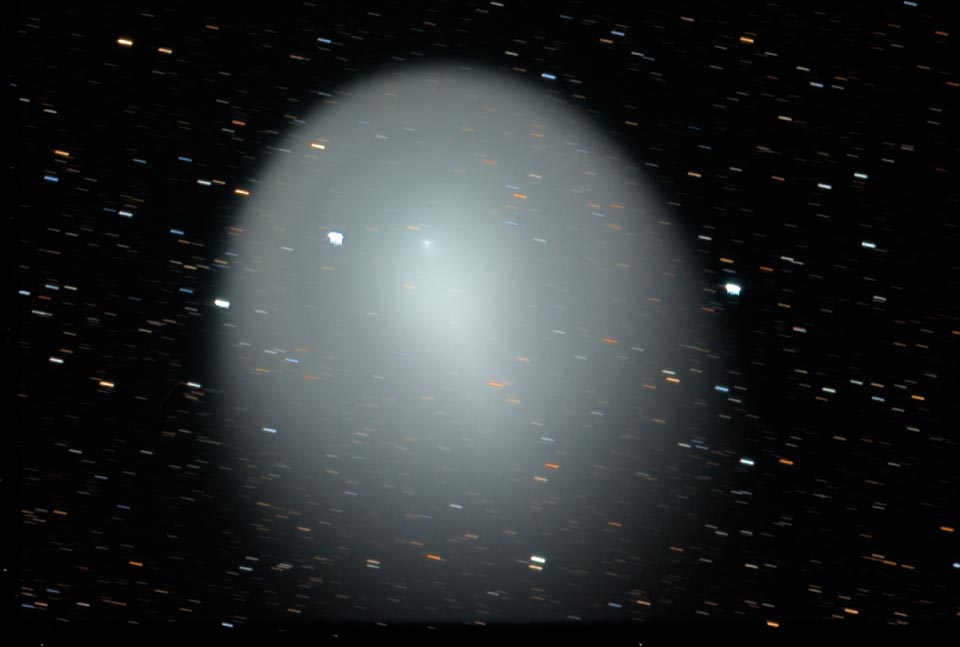 |
Visually, the comet continues to fade. It appears as a soft fuzzy disk about the size of the Full Moon, beside the bright bluish Perseus Association stars. The nucleus has dimmed and the fan-shaped structure has grown larger and relatively brighter. The inner coma is clearly sharp-edged on the north and soft-edged on the south. The bluish halo has faded to the point where it is not readily visible in this image. |
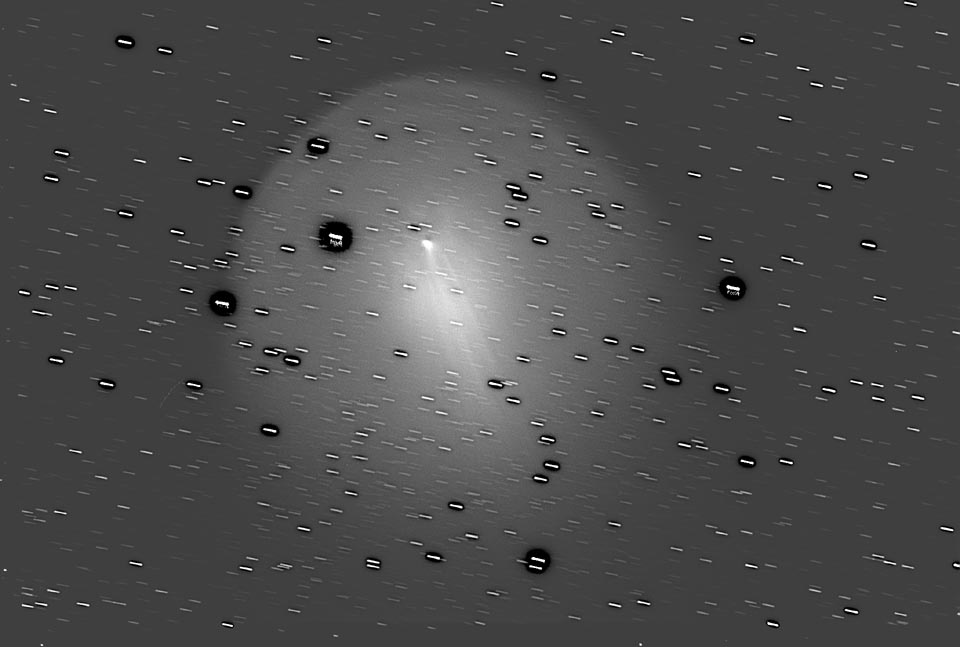 |
The four images for Nov 13 are exactly the same scale. This image reveals several streamers and some low-contrast jet-like activity on the north (top) side of the nucleus. The inner coma is markedly eccentric and asymmetrical. This image was made by multiplying a high-pass wavelet-filtered image times a log-scaled image, thereby combining low-contrast features with features that have a long dynamic range. |
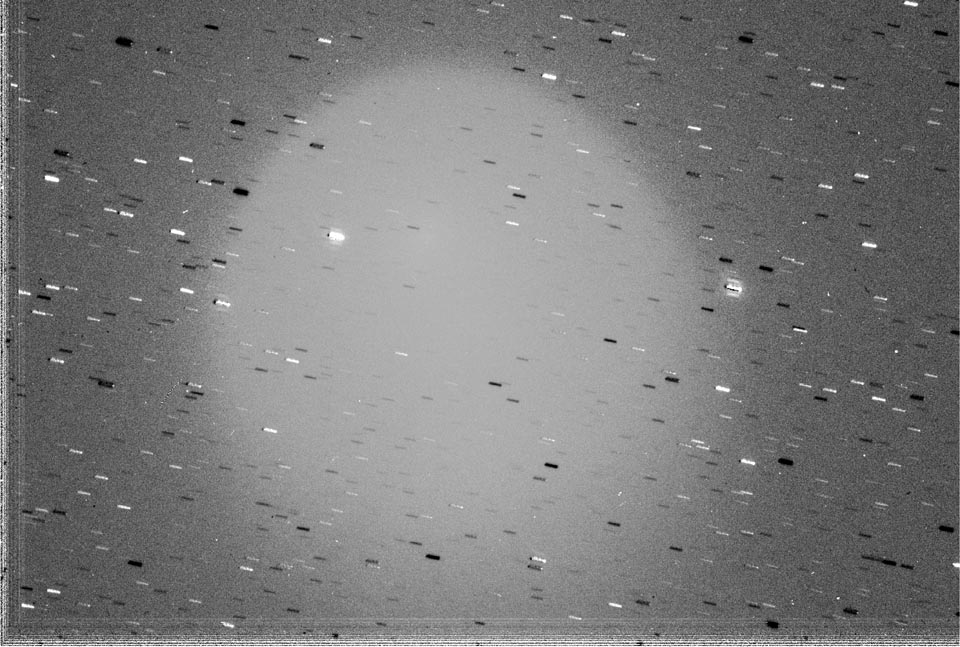 |
This blue-to-red ratio image shows that the inner coma is essential all the same color, and the outer coma (such as it is) has either faded or no longer appears blue relative to the inner coma. |
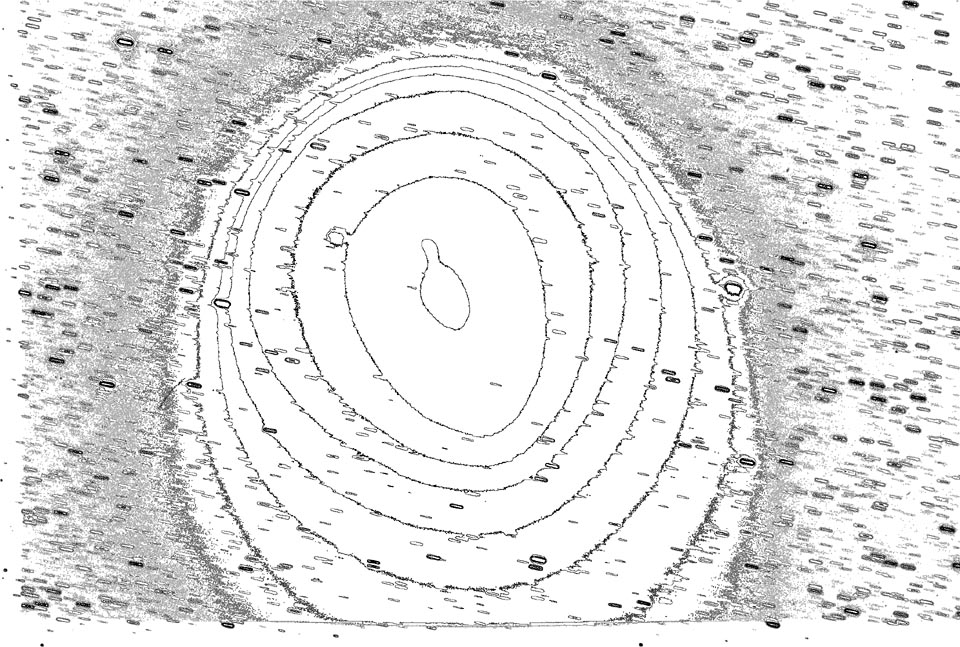 |
Isophotes highlight the comet's increasing asymmetry. A contour now encloses the nucleus and the fan structure, and the inner contours extend south (in the direction of the now-departed tail). |
Nov 4, 2007 |
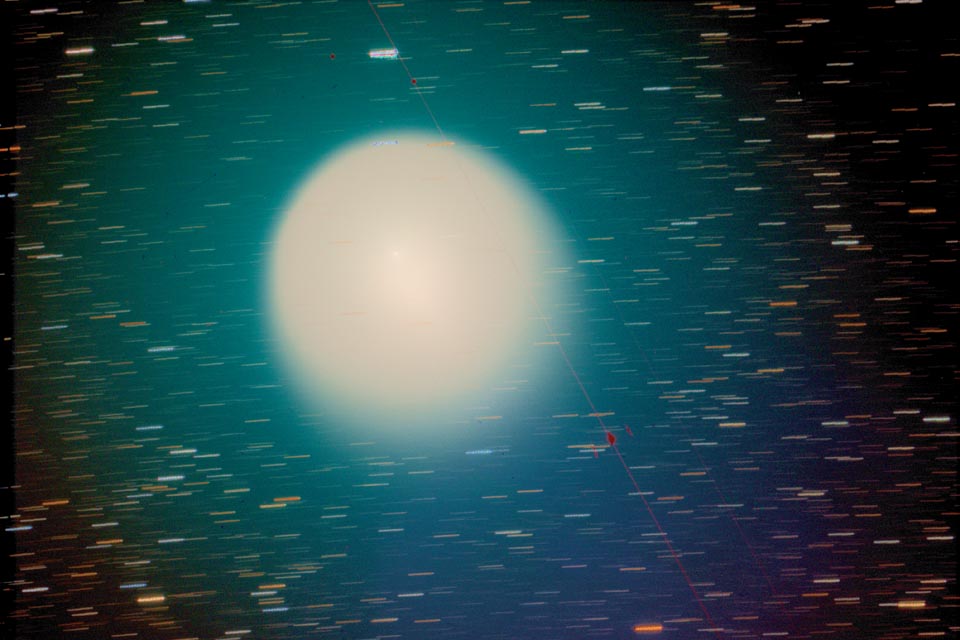 |
Visually, the comet is fading. In particular, it seems to me that the nucleus has become considerably dimmer relative to the fan structure. The tail is becoming much more prominent and now shows rather nicely in color images as a blue cast in the outer coma from the 4 o'clock to the 6 o'clock postion. |
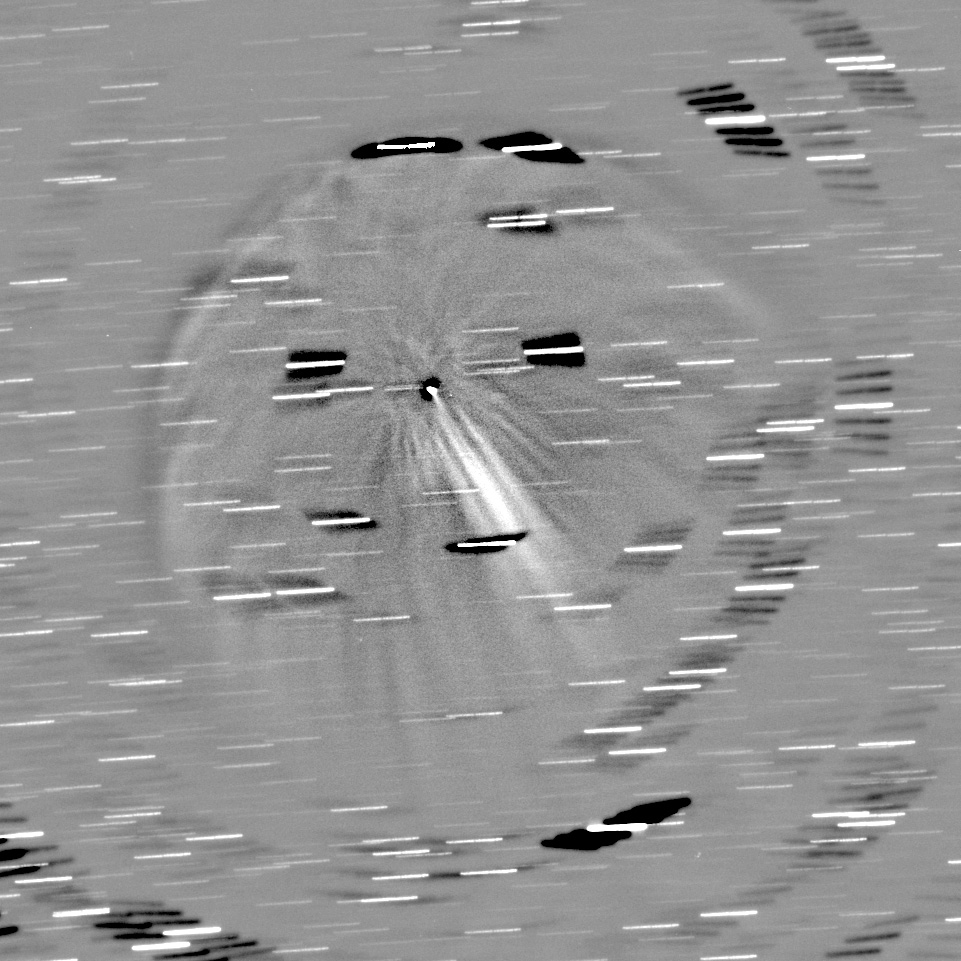 |
This is a closeup on the inner coma showing lots of subtle jets and streamers. The largest and brightest streamer (at the 5 o'clock postion) shows up even without sprecial processing. To create this image, I used a modified and enhanced version of the Larson-Sekanina rotational differencing algorithm that is much less noisy the standard version. |
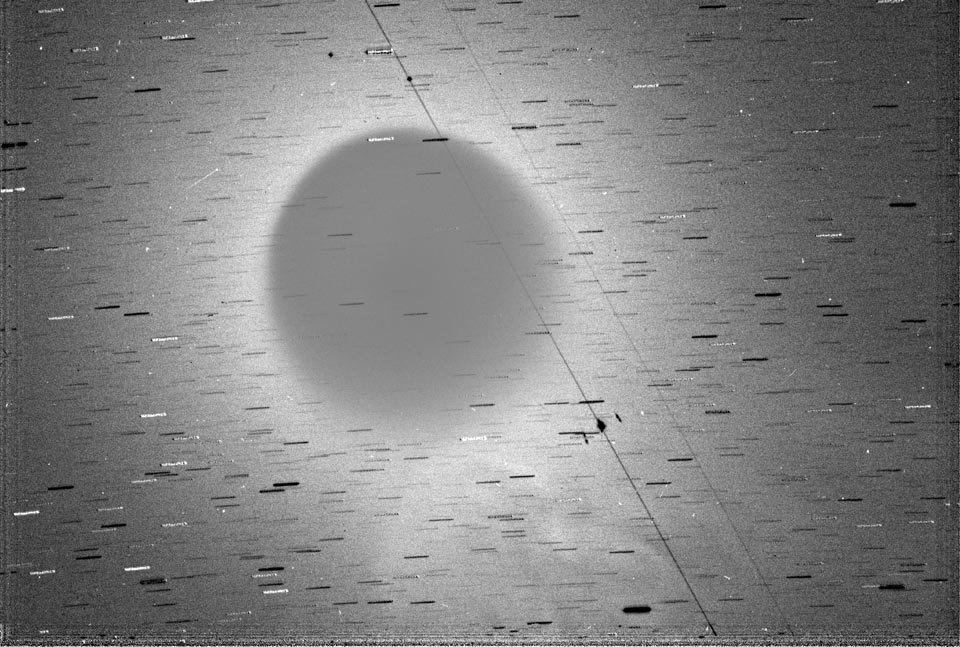 |
This image encodes the ratio between blue and red in shades of gray. Lighter is bluer; darker is redder. Note the visibility of the tail centered on the 5 o'clock position. The tail shows kinks and irregularities. Compare with the following image. |
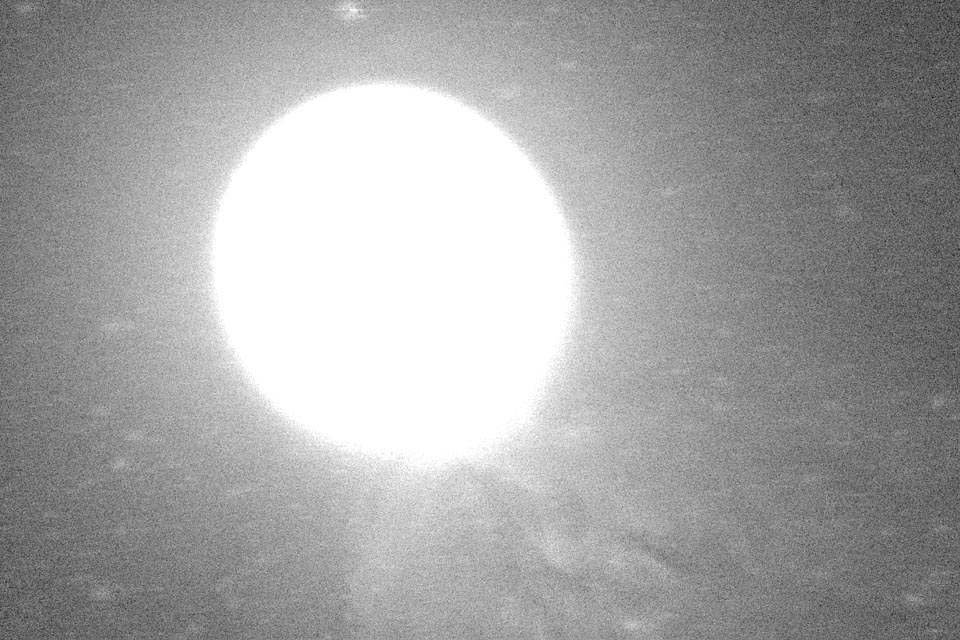 |
Here is a blue-channel image consisting of 35 exposures of 60 seconds each combined using AIP4Win's k-sigma algorithm. This algorithm rejects outlying pixel values, which resulted in the near elimination of star images. The inner and much of the outer coma are grossly overexposed, but the tail (with kinks and other irregularities) is now clearly visible. By contrast, in red light the tail is all but invisible. |
Nov 2, 2007 |
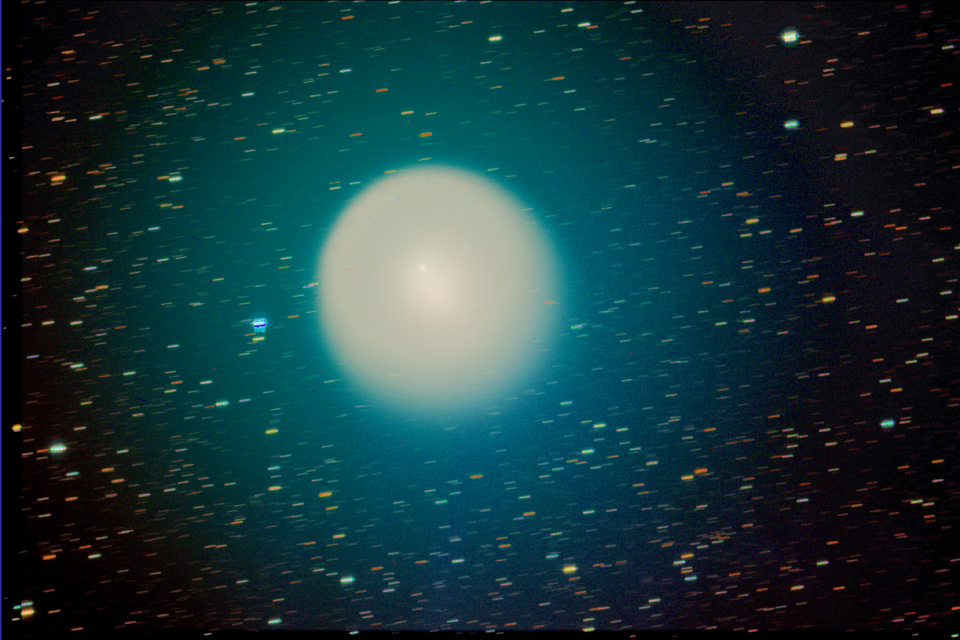 |
These images were captured using a QSI 532ws CCD camera on an 8-inch f/4 Newtonian with a Parrcorr coma corrector. I shot an image sequence consisting of 60-second LRGB shots. The nucleus was not saturated in these exposures. These color images span an extremely wide dynamic range; in the image above, the inner coma is ~1000 times more intense than the blue outer coma. To span this large range of brightness, I took the common logarithm of the pixel values, and then applied sigmoid brightness scaling. Note hints of blue tail structures between the 4 o'clock and 6 o'clock positions. |
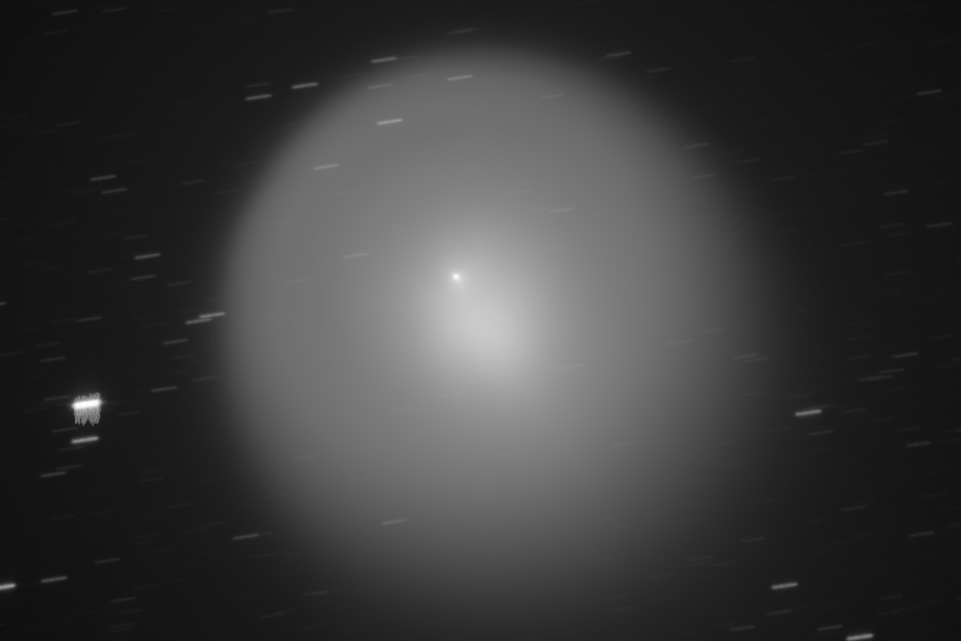 |
The image above shows the nucleus, fan structure, and inner coma. Visible at the 5 o'clock positionm relative to the nucleus, you can see a very faint, narrow jet or streamer. |
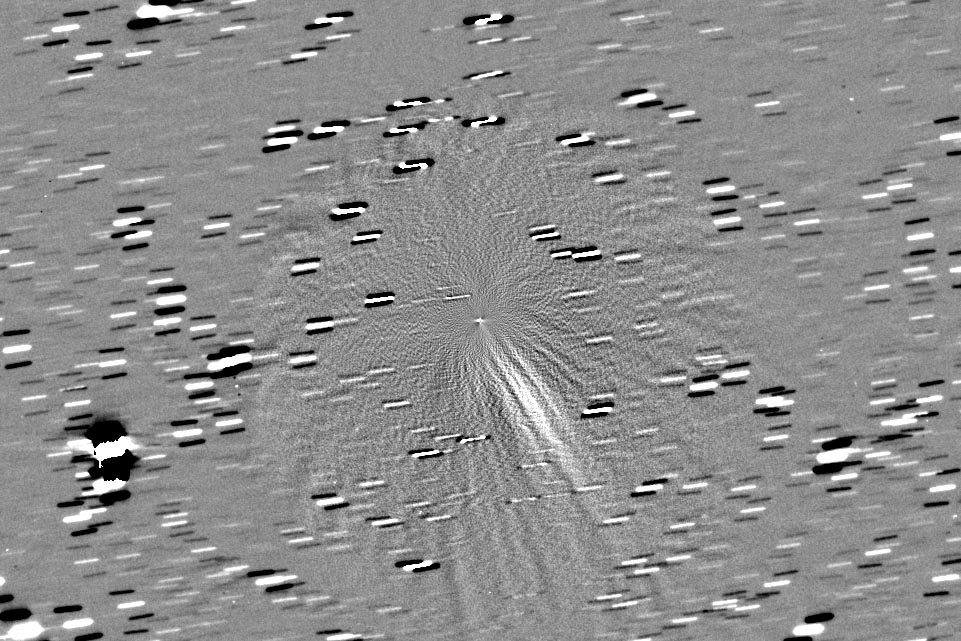 |
Shown at the same scale as the previous image, this image is a Larson-Sekanina rotational difference image. The streamer that was just barely visible in the normal image is now the prominent feature extending from the nulceus. |
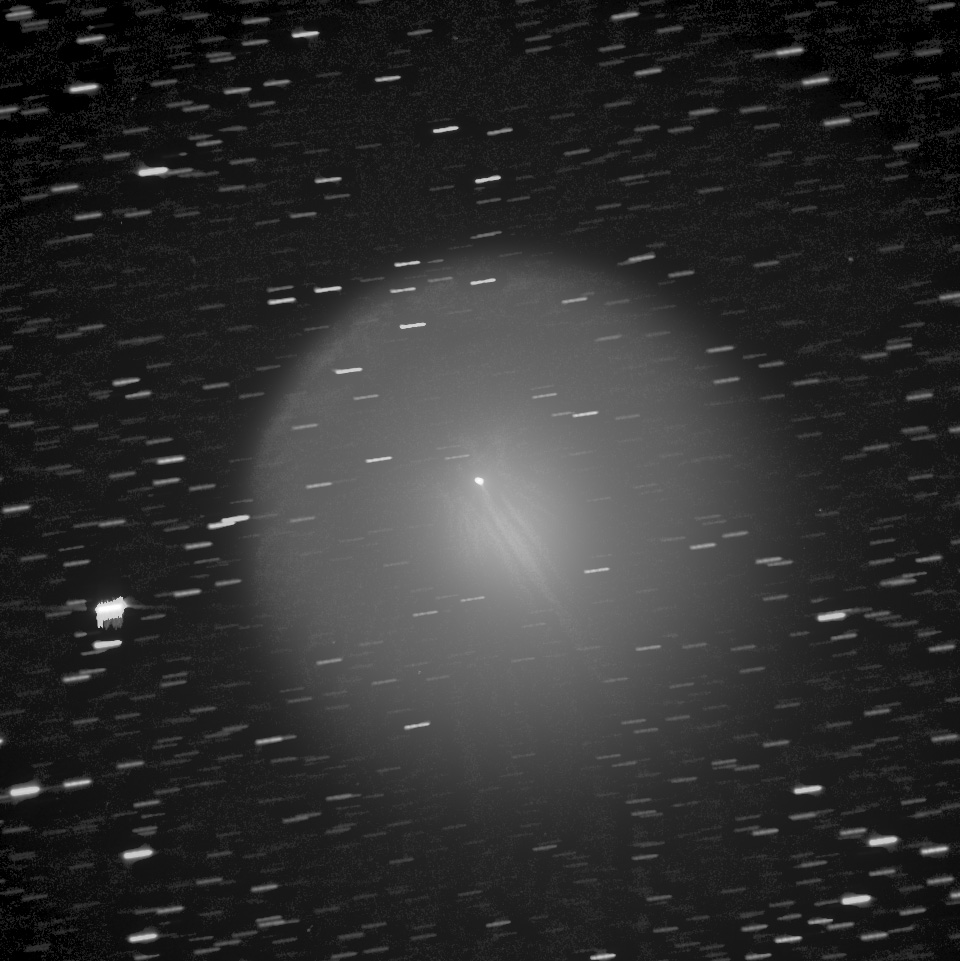 |
Finally, here's a composite view, made by combining a straight image with a Larson-Sekanina rotational difference image. This shows the spatial relationships between the nucleus, inner coma, and streamers. |
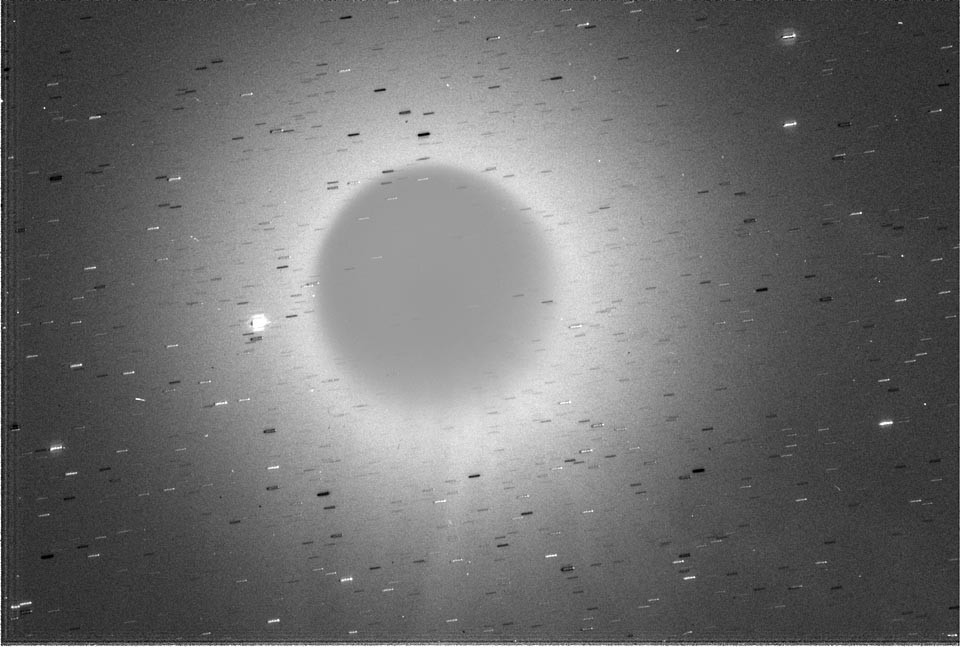 |
This image encodes the ratio between the blue and red channels as a grayscale image. Lighter is bluer; darker is redder. Tail streamers are now evident in the outer coma; the strongest one appears in the 6 o'clock position. |
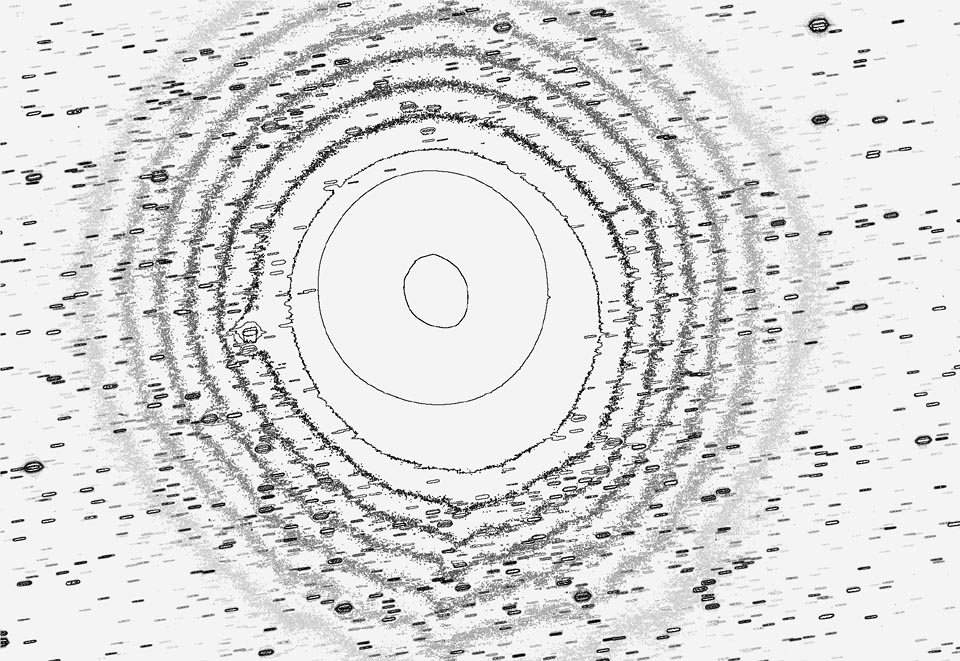 |
Compare the isophotes shown here with the preceding image. The outer isophote bends outward and several of the inner isophotes show distinct wiggles indicative of low-intensity structures, i.e., the tail-like wispy structures. |
Oct 30, 2007 |
| Through binoculars, Comet 17P/Holmes appeared as a bright fuzzball roughly one-quarter of a degree in diameter, with perhaps a slight yellowish or orangish color cast. If I were forced to say what it resembled, I would say that it resembled an unresolved globular cluster seen in a four-inch refractor at low magnification. |
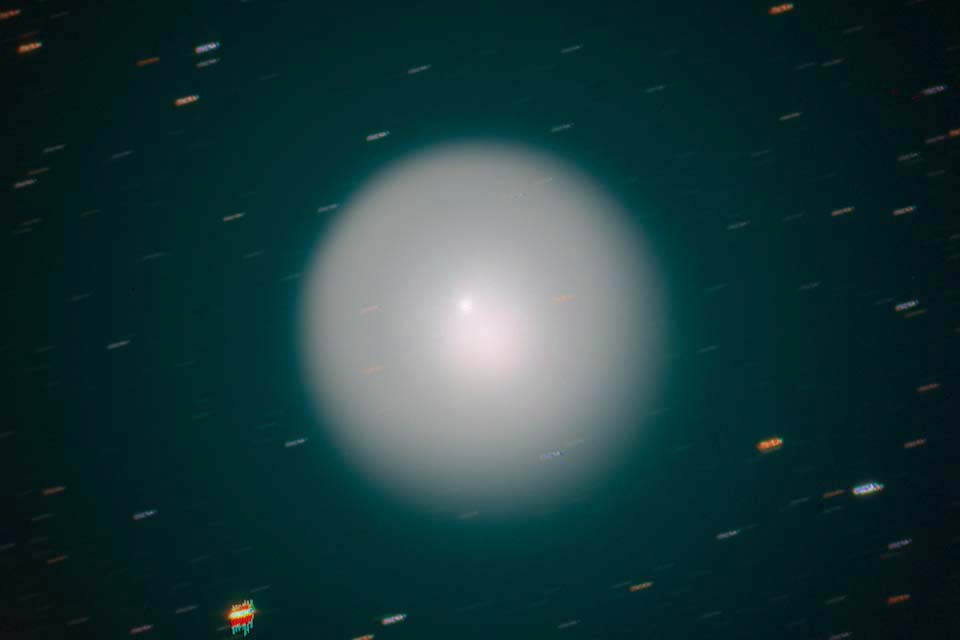 |
Below is a full-frame LRGB image made from the 100-second exposures. The "inner coma" is somewhat blown out (i.e., too bright to show any detail) to allow the blue outer coma to shine. |
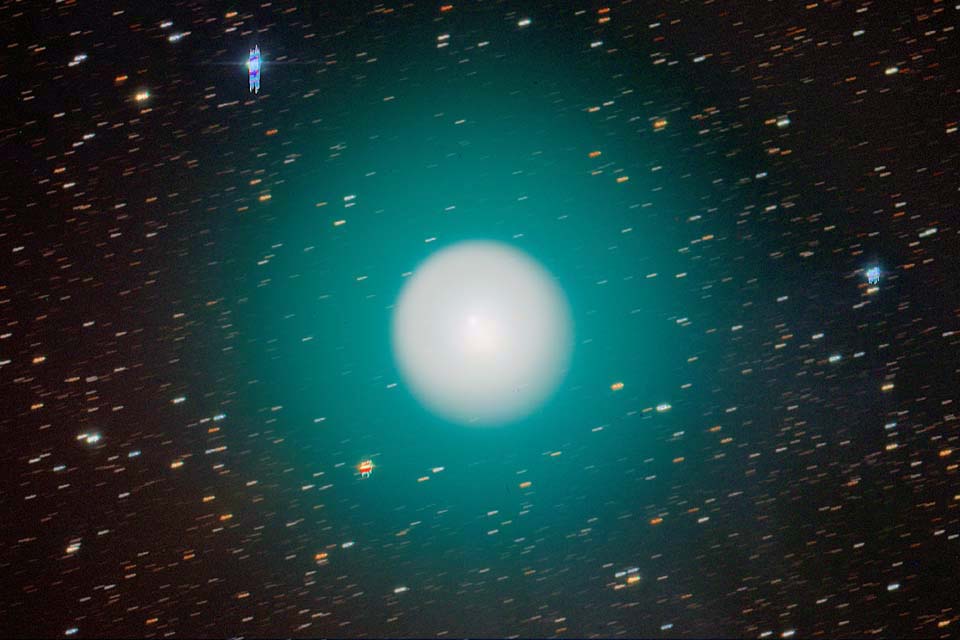 |
All of these images were captured using a QSI 532ws CCD camera on an 8-inch f/4 Newtonian with a Parrcorr coma corrector. I shot an image sequence consisting of 1-second LRGB shots, 10-second LRGB shots, and 100-second LRGB shots. As it turned out, the nucleus was not saturated in the 100-second exposures, so I used them to construct these color images. These images were all stacked and aligned on the nucleus. Because the comet was moving, stacking on stars results in color fringing around the periphery of the comet's image. Color balance was based on G2V ratios determined in September 2007. |
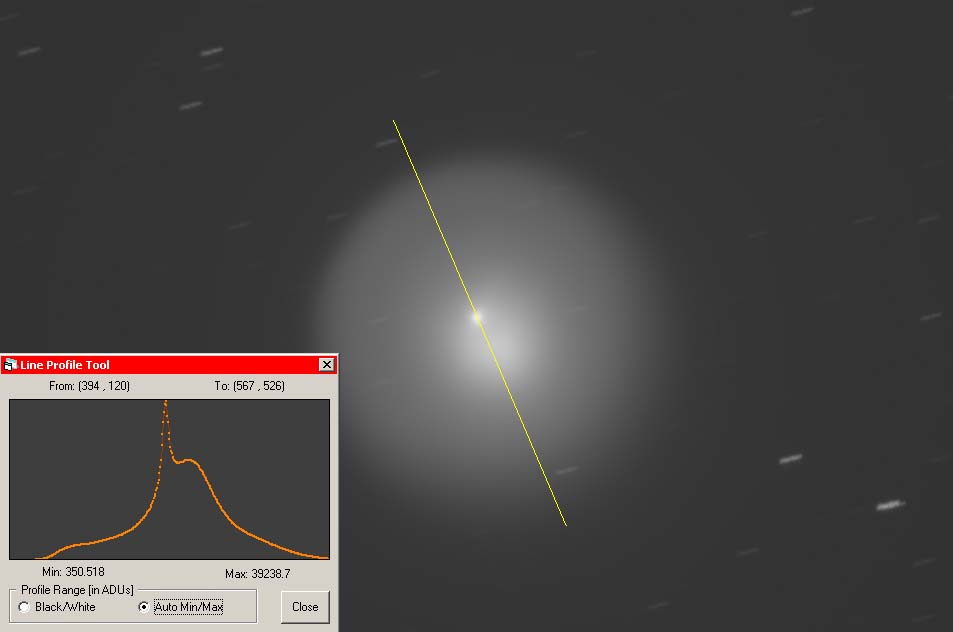 |
A profile through the nucleus, fan, and inner coma shows a photometric asymmetry that is not obvious to the eye. As this image scale (~1.5 arcsec/pixel), the nucleus is a concentrated, star-like feature. The fan-like feature appears as a bright area offset from the nucleus. The inner coma declines more rapidly on the north than on the south side of the nucleus. |
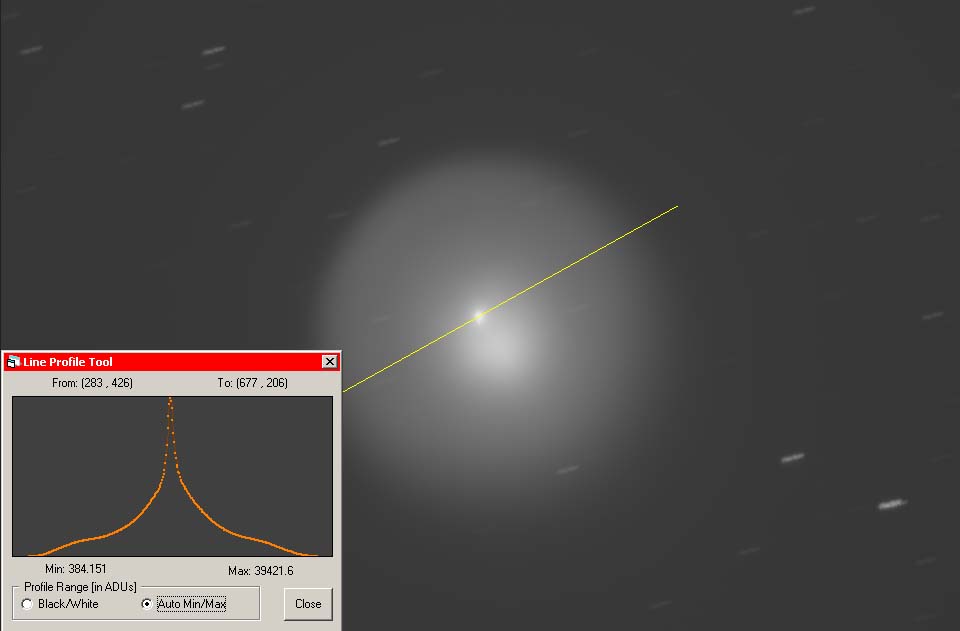 |
Unlike the profile above, the profile through the nucleus approximately perpendicular to the nucleus-fan axis (i.e., east-west) is symmetrical. |
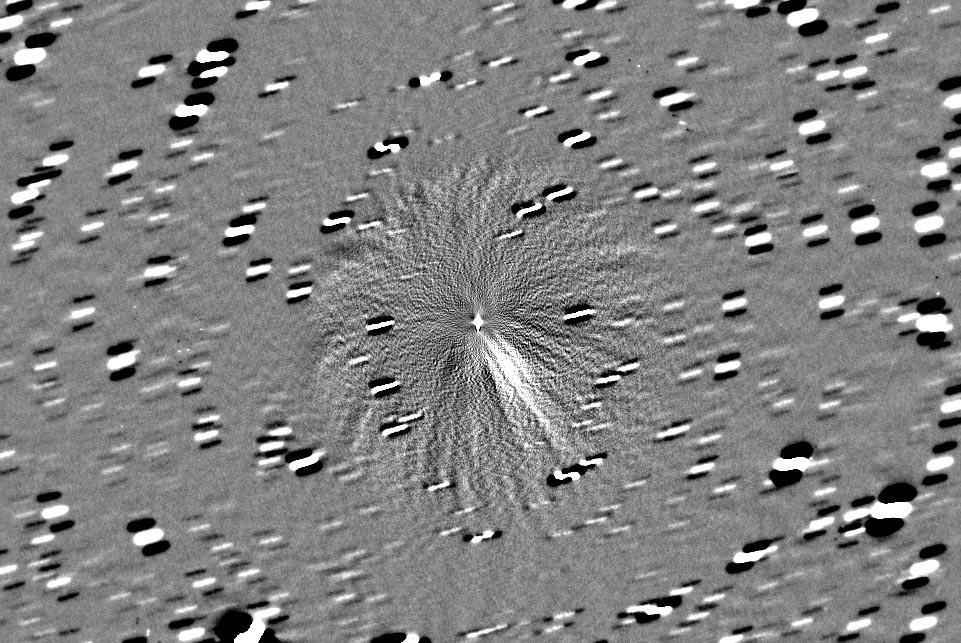 |
This Larson-Sekanina rotational difference image reveals jet-like radial structures in the inner coma. The make this image, a master image was rotated about the location of the nucleus to make two new images. One was rotated 2 degrees clockwise and other 2 degrees counter-clockwise, then both were subtracted from twice the original image. If there were no radial structure, the coma would appear uniform gray, but the technique reveal small brightness differences if they are present. Thanks to Wolfgang Renz for useful conversations on this method. |
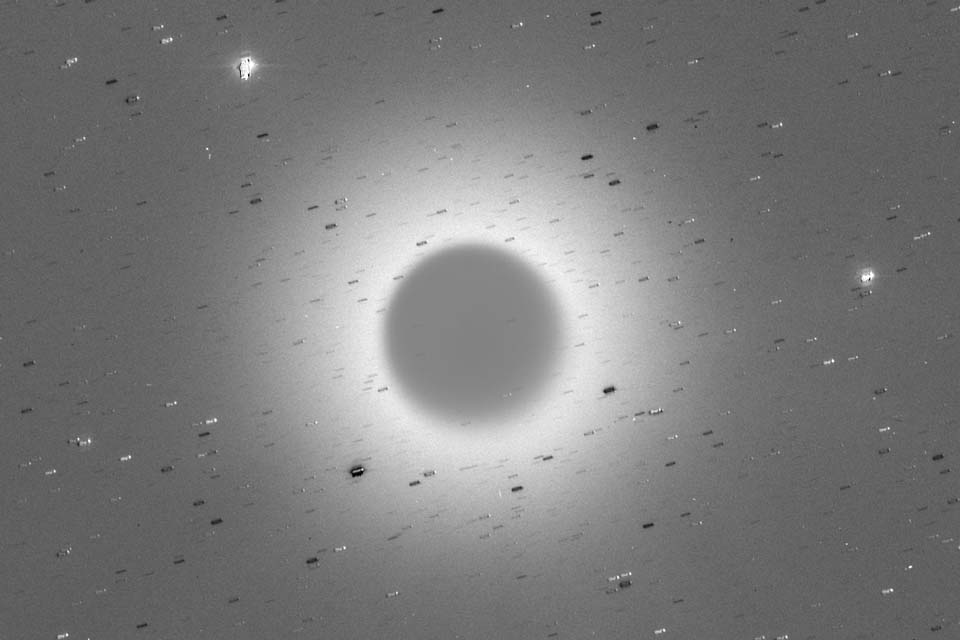 |
This is an image of the blue-to-red ratio in the comet's light, normalized to 1.0 (middle gray) in the inner coma. The outer coma shows values in the range of 1.6 to 1.8, and the sky background has values around 0.7. This image shows that the inner coma is nearly uniform in color, but that the outer coma is strongly blue. In this image, blue stars appear white while red stars appear black. White stars appear gray and blend into the sky background. |
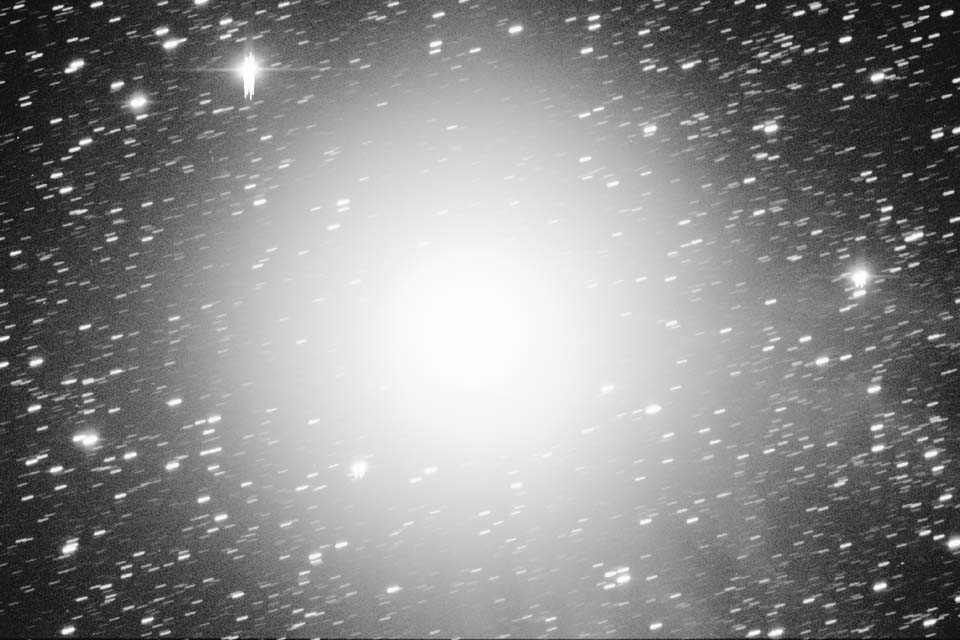 |
This black-and-white image has been processed to show the outer structure of the coma. To maximize the signal to noise ratio, I combined all of the 100-second LRGB images. Note the tail-like wisps that extend radially outward from about 3 o'clock to 6 o'clock. |
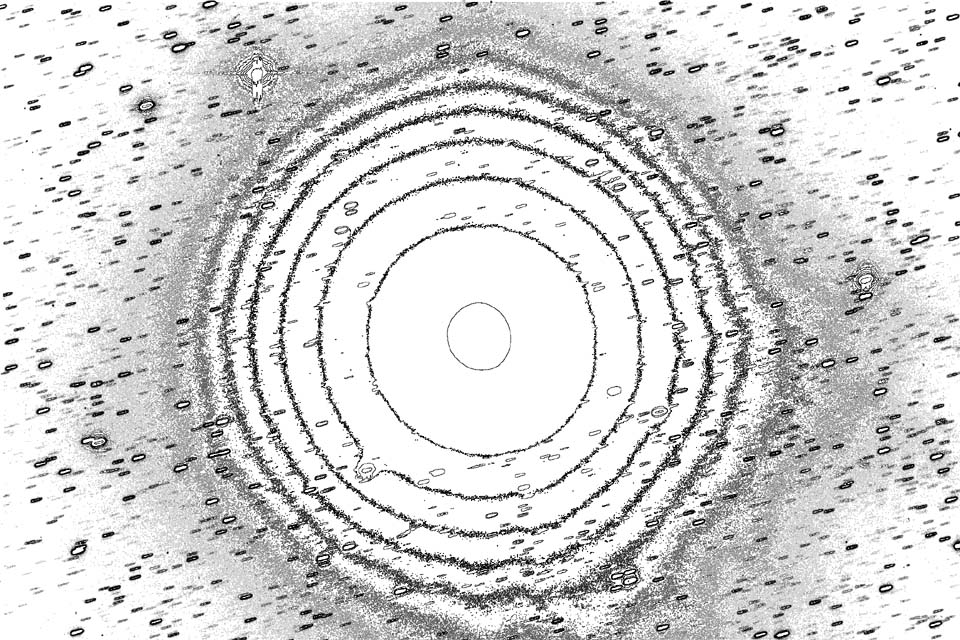 |
Compare the isophotes shown here with the preceding image. The outer isophote bends outward and several of the inner isophotes show distinct wiggles indicative of low-intensity structures, i.e., the tail-like wispy structures. |